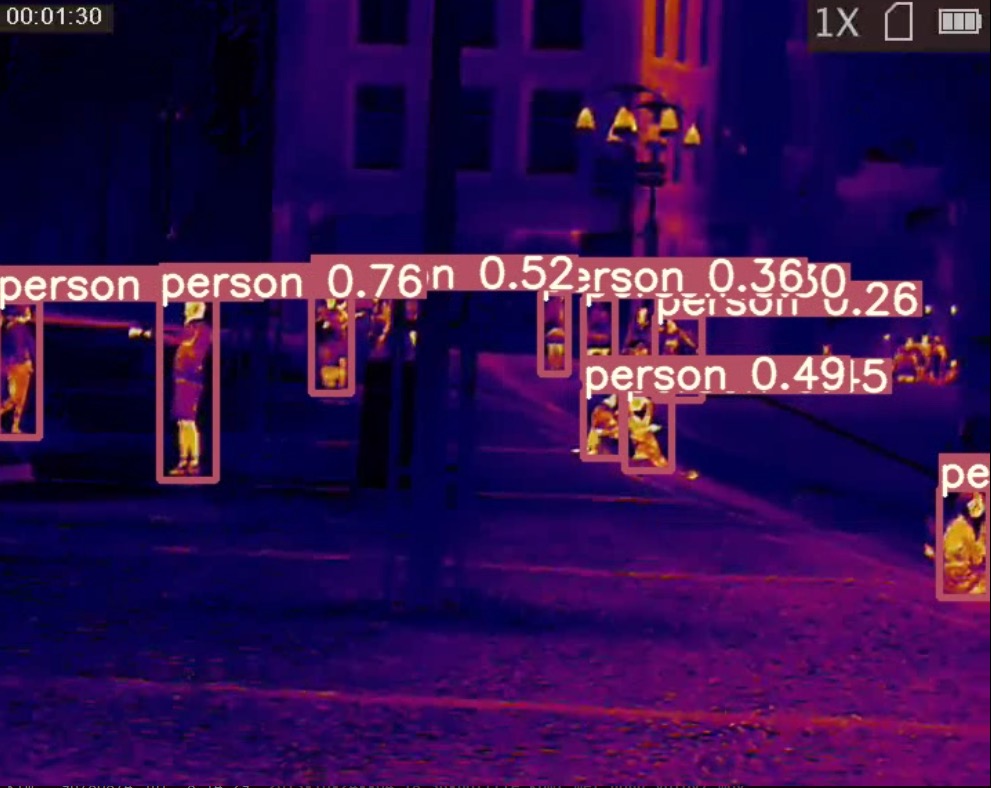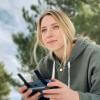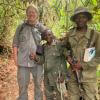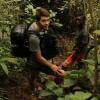Human-wildlife conflict is a shockingly common problem, often with enormous consequences for both individual animals and entire populations.
When human-wildlife conflict comes to mind, you may immediately think of wildlife crime instead - which isn't wrong, since many regions with wildlife crime problems like poaching are also areas where people may frequently deal with human-wildlife conflict, causing the two issues to go hand-in-hand. But human-wildlife conflict is a much broader issue encompassing many ways that human presence and interference can cause problems for us and animals alike. Human-wildlife conflict includes:
- Elephants trampling a farmer's crops, resulting in retaliation
- New real estate developments infringing on ecosystems where predator species live, leading to predators having less territory and less food, which in turn leads to predators attacking domestic animals and livestock
- Freeways dividing the territory of animals like mountain lions, leading to wildlife venturing into neighborhoods or being killed by cars
- Lead bullets used in hunting causing scavengers like condors to die of lead poisoning
These are just a few examples of how humans can negatively impact wildlife, and it's clear to see how many of these scenarios could escalate. Human-wildlife conflict solutions don't just include ways in which we can prevent these issues (for example, through tracking predators, monitoring populations' territories, or building barriers and wildlife crossings monitored by sensors), but also the ways in which we can help people connect with wildlife and care about learning to live alongside them.
If you're interested in solutions that can prevent human-wildlife conflict, join this group and get to know the people who are working to protect and save species around the world!
Header image: Casey Allen on Unsplash
Wildlife Conservation Society (WCS) & WILDLABS
I hold a PhD in Biological Sciences and specialize in bioacoustics and passive acoustic monitoring of cetaceans in the Argentine Sea and Antarctica. Recently, I've also embraced computing to leverage technology in enhancing our conservation efforts.

- 0 Resources
- 0 Discussions
- 14 Groups
An Environmental sciences and Management graduate from SUA, passionate and eager to drive change to the Environment, making World a better place for present and future generations.
- 0 Resources
- 3 Discussions
- 10 Groups
- @tobiaspetri
- | him/his
Schäuffelhut Berger GmbH
data scientist/algorithmic dev - caught fire for movement ecology



- 5 Resources
- 14 Discussions
- 8 Groups
Noé
Hi! I am Aurélie, a dedicated French ornithologist and engineer committed to biodiversity conservation. I am Program manager for the biodiversity of natural habitats' program in a French NGO called Noé.
- 0 Resources
- 0 Discussions
- 4 Groups
- 0 Resources
- 0 Discussions
- 3 Groups
I am a Senior researcher and PI in Conservation and Animal Ecology at Fondazione Edmund Mach, Trento, Italy. I am coordinator of EUROMAMMALS, member of the advisory board of the Global Initiative on Ungulate Migration at CMS, and President of the International Bio-Logging Society
- 0 Resources
- 0 Discussions
- 5 Groups
Arribada Initiative
Director at Arribada, a UK-based conservation technology research & development organisation



- 2 Resources
- 95 Discussions
- 11 Groups
- @alexrood
- | she/her
World Wide Fund for Nature/ World Wildlife Fund (WWF)
I'm the WILDLABS Communications and Community Management Associate Specialist at WWF-US





- 28 Resources
- 15 Discussions
- 8 Groups
Spanish veterinarian interesting wildlife conservation
- 0 Resources
- 0 Discussions
- 9 Groups
Artificial Intelligence and Environmental Science Researcher
- 0 Resources
- 0 Discussions
- 4 Groups
- @TaliaSpeaker
- | She/her
WILDLABS & World Wide Fund for Nature/ World Wildlife Fund (WWF)
I'm the WILDLABS Research Specialist at WWF-US



- 12 Resources
- 54 Discussions
- 24 Groups
Sustainability Manager for CERES Tag LTD. An animal health company; animal monitoring, conservation, & anti-poaching/ rural crime. Wildlife, livestock, equine & companion. #CeresTrace #CeresWild #CeresRanch




- 2 Resources
- 19 Discussions
- 24 Groups
The primary focus of the research is to explore how red deer movements, space use, habitat selection and foraging behaviour change during the wolf recolonization process.
10 February 2024
Article
An update on @Alasdair and @adanger24's HWC project
11 January 2024
Listen in on our interview with human-predator conflict expert, Gabi Fleury and gain a deeper understanding of the importance of holistic, ethical and community-led approaches to developing tech solutions for...
8 December 2023
TagRanger® is a state-of-the-art wildlife finding, monitoring and tracking solution for research, conservation and environmental professionals. With superior configurability for logging data, reporting location and...
23 November 2023
The illegal wildlife trade varies widely regarding species and geographical variance, necessitating niche and tailored research. Against this background, this study on elephant poaching in Tanzania was conducted at the...
30 October 2023
Careers
The Institute of Zoology (IoZ), the research division of the Zoological Society of London (ZSL), is seeking to fill three new permanent positions by recruiting outstanding early-career researchers as Research Fellows (...
20 October 2023
Listen in on our interview with Mara Elephant Project’s Tracking Manager, Wilson Sairowua, as he explains how MEP is using software, geofencing and drone technologies to resolve human-elephant conflict across Maasai...
20 October 2023
We're delighted to announce that Connected Conservation Foundation and Airbus Foundation have today launched round 2 of the ‘Satellites for Biodiversity Award’.
2 October 2023
Article
Five #tech4wildlife people, projects and updates that caught our attention this month. An AI supported bear early warning system, a project that's connecting indigenous communities with high speed internet, exploring...
12 September 2023
The WCS team in Uganda is working with impacted communities, district leaders and wildlife authorities to come up with innovative solutions to Human Wildlife Conflicts and curb wildlife crimes in our time. Check out...
5 September 2023
Read our interview with Sandra Maryanne, a young conservation tech innovator raised in Taita, Ivarenyi with first-hand experience on the challenges of human-elephant conflict within her community. To address this, she...
7 August 2023
Human-Wildlife Conflict is a pressing conservation challenge affecting natural ecosystems, biodiversity and local communities across East Africa. This has led to the development and adoption of diverse conservation...
1 August 2023
April 2024
October 2024
April 2024
event
event
| Description | Activity | Replies | Groups | Updated |
|---|---|---|---|---|
| Thank you Robyn. Sure I will send more information to your email |
|
Citizen Science, Acoustics, Conservation Tech Training and Education, Human-Wildlife Conflict | 1 day 2 hours ago | |
| SYNTHETIC APERTURE RADAR WILL ALSO DETECT AND LOCATE CHAINSAWS, MOTORBIKES, BICYLCLES, FIREARMS, MACHETES in fact anything metal. I have been concentrating on trying to get... |
+10
|
AI for Conservation, Drones, Emerging Tech, Human-Wildlife Conflict, Wildlife Crime | 1 day 9 hours ago | |
| Totally agree.Inititally sceptical until I saw Helena and Graeme were involved.MJ |
|
Acoustics, Citizen Science, Community Base, Human-Wildlife Conflict | 5 days 14 hours ago | |
| Hi @Henrikcox I hope you are well. I am not sure if you may remember myself and my colleague from CLS. We had a meeting and met in-person at Earthranger last year. ... |
+15
|
Human-Wildlife Conflict, Sensors | 4 weeks ago | |
| Great to know Lars! Let's stay in touch on this, would love to join the testing out there.Cheers,Henrik |
+68
|
Human-Wildlife Conflict | 4 weeks 1 day ago | |
| This thread is off-topic in this conversation, so happy to continue it in the other one. However, just noting - your system is one example, but not the only one - there are... |
|
Human-Wildlife Conflict, Data management and processing tools | 1 month ago | |
| Hello community, I wanted to share some exciting updates about my ongoing conservation project for endangered species. I post this here... |
|
Human-Wildlife Conflict, Early Career | 1 month 1 week ago | |
| Hi Rokshana,Maybe you can try this product from India called ANIDERS - I think this product would help you a lot. This is their website - |
|
Human-Wildlife Conflict, East Africa Community | 1 month 2 weeks ago | |
| Perfect thanks! I am still a novice using Python but my wife can help me! |
+6
|
AI for Conservation, Camera Traps, Human-Wildlife Conflict | 2 months 1 week ago | |
| @PaulAllin Thanks for your valuable insights. Zenmuse H20N seems to be very powerful and useful in this case. However, I'm looking for a more affordable option for a self-funded... |
+5
|
Drones, Human-Wildlife Conflict | 2 months 1 week ago | |
| Hi Amit,The most important thing is that the livestock owners contact you as soon as possible after finding the carcass. We commonly do two things if they contact us on the same... |
|
Camera Traps, AI for Conservation, Conservation Tech Training and Education, Early Career, Human-Wildlife Conflict, Protected Area Management Tools | 2 months 3 weeks ago | |
| Hi Danilo. you seem very passionate about this initiative which is a good start.It is an interesting coincidence that I am starting another project for the coral reefs in the... |
|
Acoustics, AI for Conservation, Biologging, Camera Traps, Citizen Science, Climate Change, Community Base, Connectivity, Drones, Emerging Tech, Human-Wildlife Conflict, Open Source Solutions, Sensors, Software and Mobile Apps, Wildlife Crime | 2 months 3 weeks ago |
WILDLABS AWARDS 2024 - Fostering bat conservation and citizen science in Zimbabwe: Establishing bat groups and training individuals to use bat detectors
4 April 2024 12:12pm
19 April 2024 2:16pm
Abigail. I would love to know more and potentially support the initiative. Please send me more info on [email protected]
24 April 2024 2:27pm
Thank you Robyn. Sure I will send more information to your email
Mass Detection of Wildlife Snares Using Airborne Synthetic Radar
7 January 2024 6:50am
19 April 2024 1:52pm
In my experience, the preference for trapping animals using different types of snares varies depending on factors such as traditional customs, geographical location, availability and accessibility of materials, terrain, ease of transporting materials, and the type of animal targeted, ranging from buffaloes to medium or small-sized antelope. Based on my experience working in open woodland savannah protected areas (where poachers prefer using wired snares to hunt big game and even small game) and in closed canopy rainforests (where poachers prefer using nylon snares to hunt medium to small-sized antelope). It would be great if the technology will be modified to be capable of detecting both types of snares.
24 April 2024 6:39am
Hi Godfrey, unfortunately the technology wont work on nylon snares. Radar is limited to detecting metal. What I am learning is that in Forest habitat where poachers are catching small antelope like duikers and suni's there is a higher proportion of thick nylon snares. In the areas where I operate more than 90% of the snares are metal, mainly multistranded cable (like brake cables) or single strand like fencing wire. The poachers use metal because the larger antelope like nyala, hartebeest, wildebeest, buffalo break nylon snares or can bite through them. The prefer multi-stranded wires like brake cable wire because they pull through the loop more reliably than single strand (fencing wire) and therefore are more effective. Multistranded wires are also more flexible and easier to coil up and travel with. Radio waves at around 2GHz can penetrate vegetation and forest canopy but cannot penetrate tree trunks and thick branches, so there is also a limitation there but it could be dealt with by having multiple passes on different flight paths over an area so snares shielded from detection by a tree trunk at one angle becomes detectable at another angle.
24 April 2024 7:45am
SYNTHETIC APERTURE RADAR WILL ALSO DETECT AND LOCATE CHAINSAWS, MOTORBIKES, BICYLCLES, FIREARMS, MACHETES in fact anything metal.
I have been concentrating on trying to get funding for Airborne Sythetic Aperture Radar on the basis of snare detection for 2 reasons:
- Detecting and prcisely locating snares will have the biggest conservation impact
- Initially running the detection algorithms will take place as post processing after a flight mission in the cloud. It is therefore betterr suited to statiic targets that will still be in the location recorded during the mission.
Post processing of the radar will shift to real-time onboard processing and reporting via a satellite connection, but this would take quite a lot more development.
Thoughts on RooBadge?
2 April 2024 2:55pm
5 April 2024 12:31pm
Sound deterrents to prevent collisions with Kangaroos in Australia have been sold for many years. None have been shown to work. Whether the Volkswagen device will be any better waits to be seen. Collision data will have to be collected for a while to see if the VW device has any effect on collision rate.
8 April 2024 12:49am
That is an interesting concept, and it would be great if something out there worked. In the meantime, I will try not to drive at dusk 🦘
At one point, I knew the "sonic" animal guards were the most stolen components of cars. You head in, get groceries, and come out, and they are gone. They weren't on the car long enough for me to confirm that would work
20 April 2024 2:40am
Totally agree.
Inititally sceptical until I saw Helena and Graeme were involved.
MJ
Webinar: Bats and Wind Energy
18 April 2024 6:11pm
Early Warning Systems for Human-Wildlife Conflict, Zoonotic Spillover, and Other Conservation Challenges
17 April 2024 5:43pm
Comparing local ecological knowledge with camera trap data to study mammal occurrence in anthropogenic landscapes of the Garden Route Biosphere Reserve
9 April 2024 7:09pm
Combining camera traps and online surveys provided a more comprehensive understanding of mammal communities in anthropogenic landscapes, increasing both spatial coverage and the number of species sightings.
Mammal responses to global changes in human activity vary by trophic group and landscape
3 April 2024 4:52pm
These researchers used camera trapping as a lens to view mammal responses to changes in human activity during the COVID-19 pandemic.
Not so silent spectators: How spectator vessels at international sailing regattas alter marine soundscapes
3 April 2024 4:50pm
Check out how water-based sporting events are impacting underwater noise pollution for marine life.
Early Warning Systems (HWC) - successes/failures, recommendations?
13 December 2023 5:36pm
27 March 2024 3:22pm
Hi @Henrikcox this is very exciting news about the Sentinel. The LoRa and cell options sound really great for a lot of urban/semi-urban areas, so a big potential winner there. Does the Sentinel offer any sort of GPIO pins that could possibly be connected to something external (e.g. like a sound unit that can playback scary sounds) if a detection occurs?
Also @StephODonnell I'd be super keen for something like a 'WILDLABS working group' or similar on this, as it such an important topic.
Rob
27 March 2024 3:45pm
INTERESTING. Okay hold tight on that idea. We've got some events coming on this topic (hence my questions), so a working group could follow on from that?
28 March 2024 7:17am
Hi @Henrikcox
I hope you are well.
I am not sure if you may remember myself and my colleague from CLS. We had a meeting and met in-person at Earthranger last year.
I would be very keen to discuss your current satellite limitations and suggest options based on your required outcome. Please let me know if I can assist?
Ai monitoring of wolves in the Netherlands
7 September 2023 9:45am
25 March 2024 5:06pm
26 March 2024 3:13pm
Hi Henrik!
We are going to do tests in the Copenhagen Zoo in Denmark during 2024 and in spring 2025. In the summer of 2025, the plan is to install a system in Northeast Greenland but I am also looking for opportunities to test it at sites with more plar bear action - like in Churchill Manitoba in fall 2025.
The system we started with is based on an NVIDIA Jetson Orin™ NX 16GB module but we are testing it alongside a RaspberryPi 5 based system.
Cheers,
Lars
27 March 2024 1:56pm
Great to know Lars! Let's stay in touch on this, would love to join the testing out there.
Cheers,
Henrik
SURAKHSYA Portal for Human-Elephant Conflict - any updates?
25 March 2024 11:15am
25 March 2024 11:39am
Ha - you're already in my thread, i've got your project in there, don't worry!
But it's more I don't want proof of concept early R&D type projects that are just destined for a paper or a hobby project, I want to hear about projects that have some plan for usability and scaling so that other people can take and implement them.
25 March 2024 12:17pm
I think that my system is likely the closest thing you will find in terms of production ready and potential to scale as it once was a commercial system with complete over the air updates more than 10 years ago. It’s been in use by many people for more than 10 years and has used AI triggering since 2019. I’m pretty sure no other system can claim that.
So I have the system but you got me on the scalability because to do that you need funding. I don’t have the funding. If I had the funding I’d be doing it full time. But I’ve said enough now. So I’ll leave it at that.
25 March 2024 12:26pm
This thread is off-topic in this conversation, so happy to continue it in the other one. However, just noting - your system is one example, but not the only one - there are certainly other early warning systems in varying stages of development, testing and roll out, and using different levels of technology (ai or otherwise).
Now for Wildlife
12 March 2024 2:36pm
Lion Deterrence
29 February 2024 9:59pm
4 March 2024 5:34am
I remember the study in EA when they painted cows with zebra strips to stop the Tsetse fly bites. Sometimes it is the simplest things that work
8 March 2024 2:52pm
Hi @rokshanabushra
So are you looking to replicate something like this?
https://predatorguard.com/products/predator-deterrent-light
This is, in principle at least, fairly simple, as it's really just some red LEDs and a small solar-battery power system. You could buy one of the commercial options and do a teardown (or I can do it if you like, as I'd be interested to find out exactly what they are doing).
In lieu of that, I suspect a light-dependent resistor is probably used to control the lights coming on at night (i.e. something along these lines: https://www.instructables.com/How-to-Make-LDR-Darkness-Sensor-Circuit-Simple-DIY/).
If you employ some sort of 'blink' or flashing protocol (you could use a 555 timer to keep the costs down), you could save quite a bit of power (compared to running the lights constantly). For example, something along these lines: https://www.instructables.com/Adjustable-SingleDual-LED-Flasher-Using-555-Timer-/ You could also add a PIR motion sensor so it only comes on when nearby motion is detected, but of course the costs of building goes up.
There are also a few off-the-shelf flasher designs that might be cheap enough already to consider (e.g. https://www.ledsales.com.au/index.php?main_page=product_info&cPath=142_143&products_id=2820). This seems like a reasonably good option for low power, although I have no idea how well it actually works...You can also buy LEDs that flash by themselves (e.g. https://www.ledsales.com.au/index.php?main_page=product_info&cPath=148_152_159&products_id=2951).
If you think sounds might also help (e.g. human noises etc.), check out the Boombox from Freaklabs: https://freaklabs.org/technology/boombox/ and it should be possible to add 'eyes' in the form of reflectors, or, some kind of LEDs that activate at the same time as the sound. You could contact Akiba or Jacinta about it as I am sure they'd help if they can: https://freaklabs.org/about/#:~:text=providers%20including%20ARGOS.-,the%20team,-Chris%20%E2%80%98Akiba%E2%80%99%20Wang
Anyway, happy to help if I can and all the best for the project.
Cheers,
Rob
8 March 2024 4:11pm
Hi Rokshana,
Maybe you can try this product from India called ANIDERS -
I think this product would help you a lot. This is their website -
Tools for automating image augmentation
26 January 2024 2:33pm
16 February 2024 7:42am
Hi @arky !
Thanks for your reply.
I am running into pytorch/torchvision incompatibility issues when trying to run your script.
Which versions are you using?
Best regards,
Lars
18 February 2024 11:05am
@Lars_Holst_Hansen Here is the information you requested. Also run Yolov8 in multiple remote environments without any issues. Perhaps you'll need to use a virtual environment (venv et al) or conda to remedy incompatibility issues.
$ yolo checks
Ultralytics YOLOv8.1.4 🚀 Python-3.10.12 torch-1.13.1+cu117 CUDA:0 (Quadro T2000, 3904MiB)
Setup complete ✅ (16 CPUs, 62.5 GB RAM, 465.0/467.9 GB disk)
OS Linux-6.5.0-17-generic-x86_64-with-glibc2.35
Environment Linux
Python 3.10.12
Install pip
RAM 62.54 GB
CPU Intel Core(TM) i7-10875H 2.30GHz
CUDA 11.7
matplotlib ✅ 3.5.1>=3.3.0
numpy ✅ 1.26.3>=1.22.2
opencv-python ✅ 4.7.0.72>=4.6.0
pillow ✅ 10.2.0>=7.1.2
pyyaml ✅ 6.0.1>=5.3.1
requests ✅ 2.31.0>=2.23.0
scipy ✅ 1.11.4>=1.4.1
torch ✅ 1.13.1>=1.8.0
torchvision ✅ 0.14.1>=0.9.0
tqdm ✅ 4.66.1>=4.64.0
psutil ✅ 5.9.8
py-cpuinfo ✅ 9.0.0
thop ✅ 0.1.1-2209072238>=0.1.1
pandas ✅ 1.5.3>=1.1.4
seaborn ✅ 0.12.2>=0.11.0
18 February 2024 11:18am
Perfect thanks! I am still a novice using Python but my wife can help me!
Seeking Advice on Thermal Drones for Night-Time Elephant Observation
25 December 2023 9:53am
13 February 2024 8:39am
Hi Nilaksha (and everyone else),
I have been looking at the application of thermal to improve the automated detection through RGB imagery. One of the large drawbacks of thermal is the lower resolution. This is impart cost but also down to basic physics, IR light has a much longer wavelength and therefore a sensor can't have as many 'pixels' on it compared to an RGB sensor. This implies that you either need a thermal camera lens with a longer focal length, which reduces the area you cover, or you need to fly much lower. The drawback of the latter is you cover much less ground per unit of time/battery and you have the potential of disturbing the animals.
I know that DJI have recently released a starlight camera combined with thermal (DJI Enterprise Zenmuse H20N). It looks very impressive but I have not yet managed to test it. Being self-funded as well I have opted for hiring in a drone company to fly for me with the state of the art equipment rather than buying and flying myself.
Hope that helps and keen to hear how you get on!
16 February 2024 8:23am
@PaulS Thank you. It sounds great. I'll have a look and get back.
16 February 2024 8:34am
@PaulAllin Thanks for your valuable insights. Zenmuse H20N seems to be very powerful and useful in this case. However, I'm looking for a more affordable option for a self-funded research.
Post-doc possition - Field spanning movement ecology, ecology of fear, bio-logging science, behavioral ecology, and ecological statistics
10 February 2024 7:20am
Southern African Wildlife Management Association Conference 2024
6 February 2024 12:20pm
Conservation Technology for Human-Wildlife Conflict in Non-Protected Areas: Advice on Generating Evidence
22 January 2024 11:36pm
23 January 2024 1:54pm
This is an area where my system would do very well in:
Also, as you mention areas dominated by humans, there is a high likelyhood that there will be enough power there to support this system, which provides very high performance and flexibility but it comes with a power and somewhat a cost cost.
Additionally, it's life blood comes with generating alerts and making security and evidence gathering practical and manageable, with it's flexible state management system.
Ping me offline if you would like to have a look at the system.
4 February 2024 8:16am
Hi Amit,
The most important thing is that the livestock owners contact you as soon as possible after finding the carcass. We commonly do two things if they contact us on the same day or just after the livestock was killed:
- Use CyberTracker (or similar software) on an Android smart phone to record all tracks, bite marks, feeding pattern and any other relevant signs of the reason for the loss with pictures and GPS coordinates. [BTW, Compensation is a big issue -- What do you do if the livestock was stolen? What do you do if a domestic animal killed the livestock? What if it died from disease or natural causes and was scavenged upon by carnivores afterwards?]
- In the case of most cats, they would hide the prey (or just mark it by covering it with grass or branches and urinating in the area). In this case you can put up a camera trap on the carcass to capture the animal when it returns to its kill (Reconyx is good if you can afford it - we use mostly Cuddeback with white flash). This will normally only work if the carcass is fresh (so other predators would not be able to smell it and not know where it is yet), so the camera only has to be up for 3-5 days max.
This is not really high-tech, but can be very useful to not only establish which predator was responsible (or if a predator was responsible), but also to record all the evidence for that.
Passionate engineer offering funding and tech solutions pro-bono.
23 January 2024 12:06pm
26 January 2024 3:18pm
Hi Krasi! Greetings from Brazil!
That's a cool journey you've started! Congratulations. And I felt like theSearchLife resonates with the work I'm involved round here. In a nutshell, I live at the heart of the largest remaining of Atlantic forest in the planet - one of the most biodiverse biomes that exist. The subregion where I live is named after and bathed by the "Rio Sagrado" (Sacred River), a magnificent water body with a very rich cultural significance to the region (it has served as a safe zone for fleeing slaves). Well, the river and the entire bioregion is currently under the threat of a truly devastating railroad project which, to say the least is planned to cut through over 100 water springs!
In face of that the local community (myself included) has been mobilizing to raise awareness of the issue and hopefully stop this madness (fueled by strong international forces). One of the ways we've been fighting this is through the seeking of the recognition of the sacred river as an entity of legal rights, who can manifest itself in court, against such threats. And to illustrate what this would look like, I've been developing this AI (LLM) powered avatar for the river, which could maybe serve as its human-relatable voice. An existing prototype of such avatar is available here. It has been fine-tuned with over 20 scientific papers on the Sacred River watershed.
And right now myself and other are mobilizing to manifest the conditions/resources to develop a next version of the avatar, which would include remote sensing capacities so the avatar is directly connected to the river and can possibly write full scientific reports on its physical properties (i.e. water quality) and the surrounding biodiversity. In fact, myself and 3 other members of the WildLabs community have just applied to the WildLabs Grant program in order to accomplish that. Hopefully the results are positive.
Finally, it's worth mentioning that our mobilization around providing an expression medium for the river has been multimodal, including the creation of a shortfilm based on theatrical mobilizations we did during a fest dedicated to the river and its surrounding more-than-human communities. You can check that out here:
Let's chat if any of that catches your interest!
Cheers!
2 February 2024 1:22pm
Hi Danilo. you seem very passionate about this initiative which is a good start.
It is an interesting coincidence that I am starting another project for the coral reefs in the Philipines which also requires water analytics so I can probably work on both projects at the same time.
Let's that have a call and discuss, will send you a pm with my contact details
There is a tech glitch and I don't get email notifications from here.
Landscape of technology solution for African lion conservation
15 January 2024 11:03am
29 January 2024 10:25am
Hi Simon,
Thanks for your reply. I would be interested in having a chat with you and hear more about the work you are doing! Lets connect and we can try to schedule a call in the coming days.
Thank you,
Best,
Jacobo
29 January 2024 11:03am
Hi Maureen,
Thank you very much for your insights. I would definitely like to connect with you and discuss this further! I will reach out to you so we can potentially schedule a quick call and chat about this further.
Thank you,
Best regards,
30 January 2024 10:47am
Hi Jacobo,
We have launched a new tracking/logging/finding technology which you may find of interest https://www.tagranger.com/
Based on LoRaWAN (but with yor own handheld gateway) you can communicate with your Tags in real time. As well as requesting current GPS locations from long distances away you can also use the integrated ranging tools which give you distance to your Tag in metres when you get closer.
Key features:
LoRaWAN (tested up to 21km line of sight) No infrastructure required, but you can also add it to your own LoRaWAN network.
UWB ranging gives distance (in metres) to the Tag up to 150m away
Hybrid Ranging combines the equivalent of a VHF pinger from a few km away (line of sight) with the UWB ranging when you get closer
Log Download remotely using UWB radio
Ultra light 39g Tag
Power Efficiency Defined by your configuration profie, 2 days to 4 years!
Let me know if you would like any further help with this.
Craig
How are Outdoor Fire Detection Systems Adapted for Small Forest Areas, Considering the Predominance of Indoor Fire Detectors?
8 January 2024 4:27pm
22 January 2024 6:35pm
Fire detection is a sort of broad idea. Usually people detect the products of fire, and most often this is smoke.
Many home fire detectors in the US use a radioactive source and measure the absorption of the radiation by the air. More smoke means more absorption.
For outdoor fire detection, PM2.5 can be a very good smoke proxy, and outdoor PM2.5 sensing is pretty accessible.
This one is very popular in my area.
Cold-Weather Soundscapes
HWC Tech Challenge update 2020
Presentation opportunity: Text analysis for conservation (NACCB 2024)
8 January 2024 4:05pm
Apply to Beta test Instant Detect 2.0
11 May 2023 10:55am
21 December 2023 3:48am
Will you accept personal/hobbyist focused on conservation on their small plots of land (10-100 acres)?
I would, and know others, who would happily pay more than the official conservationists rate for the service, which could help to further subsidize the project. (Referring to your statement here: https://wildlabs.net/discussion/instant-detect-20-and-related-cost)
Seeking Host Organisations for Travel Scholarship Application
19 December 2023 12:54am
20 December 2023 3:07am
Hi Eva,
Me and my colleagues run a small NGO based on Yogyakarta in Indonesia, although our projects are spread around the country. One of our active project is working with the movement ecology of Sunda gharials in Berbak-Sembilang National Park. One of the other is for Malayan Giant Turtle conservation using one-plan approach, which we are planning to start in situ phase. We can't give you promise about anything, but are able to be the host organization and would love to talk the opportunity!
Cheers,
Dhanu
Thermal cameras for monitoring visitors in highly vulnerable conservation areas
21 June 2022 3:44pm
22 September 2023 12:00pm
I would be interested how you setted up this system. Which model do yu use and how are they connected?
6 October 2023 12:27pm
We have the the FLIR FC series (FC 618) thermal cameras setup. with regards to the connection between the cameras and monitoring station, this through fiber cable and microwave radio links.
15 December 2023 8:09pm
Hi,
This is a really late answer but I was new to wildlabs then. I have a security appliance that uses state of the AI models and user defined polygon areas of interest that generates video alerts of intrusions in typically under a second.
Although its setup to install automatically on an NVidia AI on the edge boxes of your intentions were to monitor a great deal of cameras you could also install it on a desktop with a high end GPU for very high performance. At home I use a desktop with an rtx 2080ti and monitor around 15 cameras and a thermal imaging camera (old one).
I have also tested a high end model (yolov7) on a high end thermal imaging camera image and it works fine as well.

Thermal imaging cameras are hellishly expensive though and I’ve found that new extremely light sensitive cameras like the HIKvision colorvu series almost obsoletes them in terms of people detection at night at a fraction of the cost.
If you are interested I’d be happy to show you a demo in a video meeting sometime if you like. I’m pretty sure it would meeting all your intrusion detection and alerting needs.
My project page is
How polar bears and people are kept safe thanks to integrated video and radar system
15 December 2023 12:22pm
Milestones Systems and Polar Bear International present their test of bear-dar in Churchill in the this Youtube video:
https://www.youtube.com/watch?v=WiXAHYCA99M
Bear-dar: Updates from the Field
15 December 2023 11:58am
Polar Bear International chat about bear-dar and burr on fur in this video on Youtube
https://www.youtube.com/watch?v=AfL42Wqctkk













































































8 April 2024 9:29am
Thank you Carly!
We have over 60 bats recorded in Zimbabwe